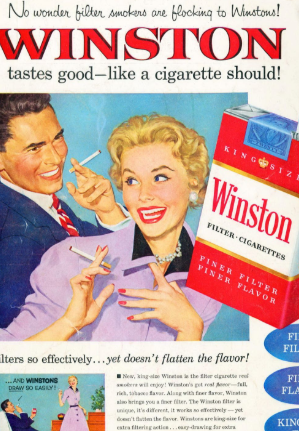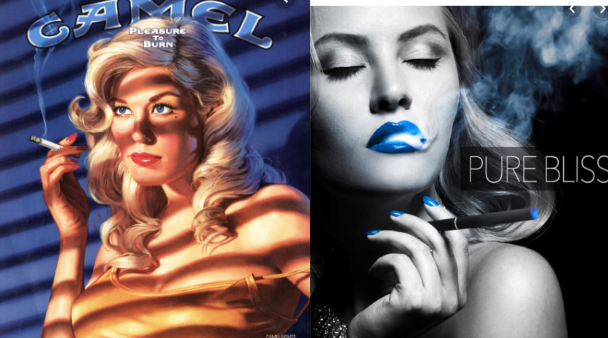over the last decade, a renaissance of nicotine addiction has emerged, opening questions about the cultural connection to our vices. --Edrisina SKlar, 11th grade
Nicotine has been a significant part of American culture for centuries. The common assumption is that when the nicotine-based products were exposed for their addictive nature and dangerous carcinogens, there was a decline in cigarette use. However, the period directly following these reports actually witnessed cigarettes’ spike in popularity.
Reports linking cigarette use with lung cancer first began to really emerge in the early 1950s, directly followed by information about their addictive qualities in the late 1950s to early 1960s. Yet, according to the New York Times, during 1963, Americans smoked a record breaking number of 523 billion cigarettes. As reported by an article in the Smithsonian in 1965, 45 percent of Americans maintained a smoking habit. This means that cigarette use peaked in the years directly following the release of information regarding the horrific dangers related to the habit.
Reports linking cigarette use with lung cancer first began to really emerge in the early 1950s, directly followed by information about their addictive qualities in the late 1950s to early 1960s. Yet, according to the New York Times, during 1963, Americans smoked a record breaking number of 523 billion cigarettes. As reported by an article in the Smithsonian in 1965, 45 percent of Americans maintained a smoking habit. This means that cigarette use peaked in the years directly following the release of information regarding the horrific dangers related to the habit.

Cigarettes were most popular in the mid 1960s, in the middle of both the Vietnam War and the Civil Rights movement. Culturally and politically, America was very polarized. Everyone had an opinion, and very few were willing to hear any others. Protests were frequent, and tension was high. With the Vietnam War came the draft, placing a constant feeling of impending doom on the youth of America. Did the ominous semblance of the future contribute to apathy regarding one’s health? It was open knowledge that cigarette addiction was slowly killing people, and yet consumption of this product didn’t actually decline until years later, finally reaching an all time low of 14 percent in 2017. However, this statistic represents cigarette use only, excluding other forms of nicotine consumption such as e cigarettes or patches, and over the last decade, a new surge of nicotine addiction has emerged, opening questions about the cultural connection to our vices.
According to a survey taken in 2018, more than 37 percent of highschool students reported vaping within the past year, let alone those who didn’t report it. Paired with the constant conversation within highschools about nicotine addiction, and the newly found popularity of e-cigarettes among adolescents, it’s safe to say that there’s a growing resurgence of nicotine dependence in the youth of the United States.Why are teenagers smoking again?
It’s becoming more and more apparent how much more politically polarized America has gotten over the course of the past several years. From partisan politics to views on climate change, it is safe to say that Americans are not seeing eye-to-eye. Similarly to the 1960s, much of today’s activism is led by youth, pressured to accomplish things beyond their years—pressured to fix the world. The pressure to save a planet dying beneath their feet, and an ever-growing fear of perishing in a mass shooting: most teens are experiencing a frighteningly similar feeling of impending doom to the one experienced by the young people of America in the 1960s.
It’s becoming more and more apparent how much more politically polarized America has gotten over the course of the past several years. From partisan politics to views on climate change, it is safe to say that Americans are not seeing eye-to-eye. Similarly to the 1960s, much of today’s activism is led by youth, pressured to accomplish things beyond their years—pressured to fix the world. The pressure to save a planet dying beneath their feet, and an ever-growing fear of perishing in a mass shooting: most teens are experiencing a frighteningly similar feeling of impending doom to the one experienced by the young people of America in the 1960s.



